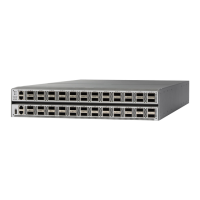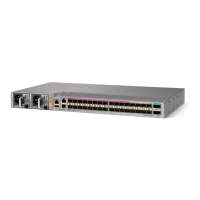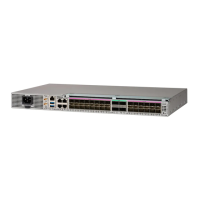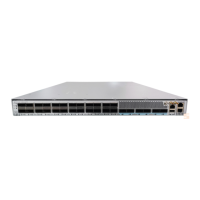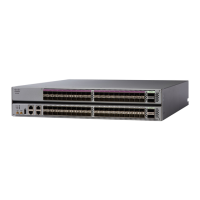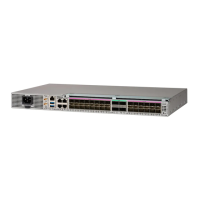Figure 16: Aligning a CFP2 Module into a Port Socket
Step 3 Slide the CPT2 module in until the EMI gasket flange makes contact with the line card faceplate.
Step 4 Press firmly on the front of the CFP2 module with your thumbs to fully seat it in the transceiver socket.
The CFP2 module is properly seated in the slot by applying symmetrical force of at least 80N on its front surface, along
the centerline. The latching mechanisms on both the sides of the pluggable should be fully engaged, and the electrical
connectors should be completely mated.
Figure 17: Installing a CFP2 Module into a Port Socket
Step 5 When you are ready to attach the network cable interface, remove the dust plugs and inspect and clean fiber connector
end faces, and then immediately attach the network interface cable connectors into the CFP2 module optical bores.
Removing a CFP2 Module
To remove a CFP2 module, follow these steps:
Step 1 Attach an ESD-preventive wrist or ankle strap and follow its instructions for use.
Step 2 Disconnect and remove all interface cables from the ports; note the current connections of the cables to the ports on the
line card.
Step 3 Open the bail latch on the CFP2 module with your index finger. If the bail latch is obstructed and you cannot use your
index finger to open it, use a small flat-blade screwdriver or other long, narrow instrument to open the bail latch.
Connect Router to the Network
20
Connect Router to the Network
Removing a CFP2 Module
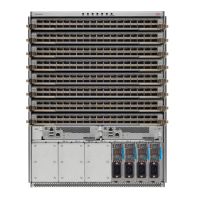
